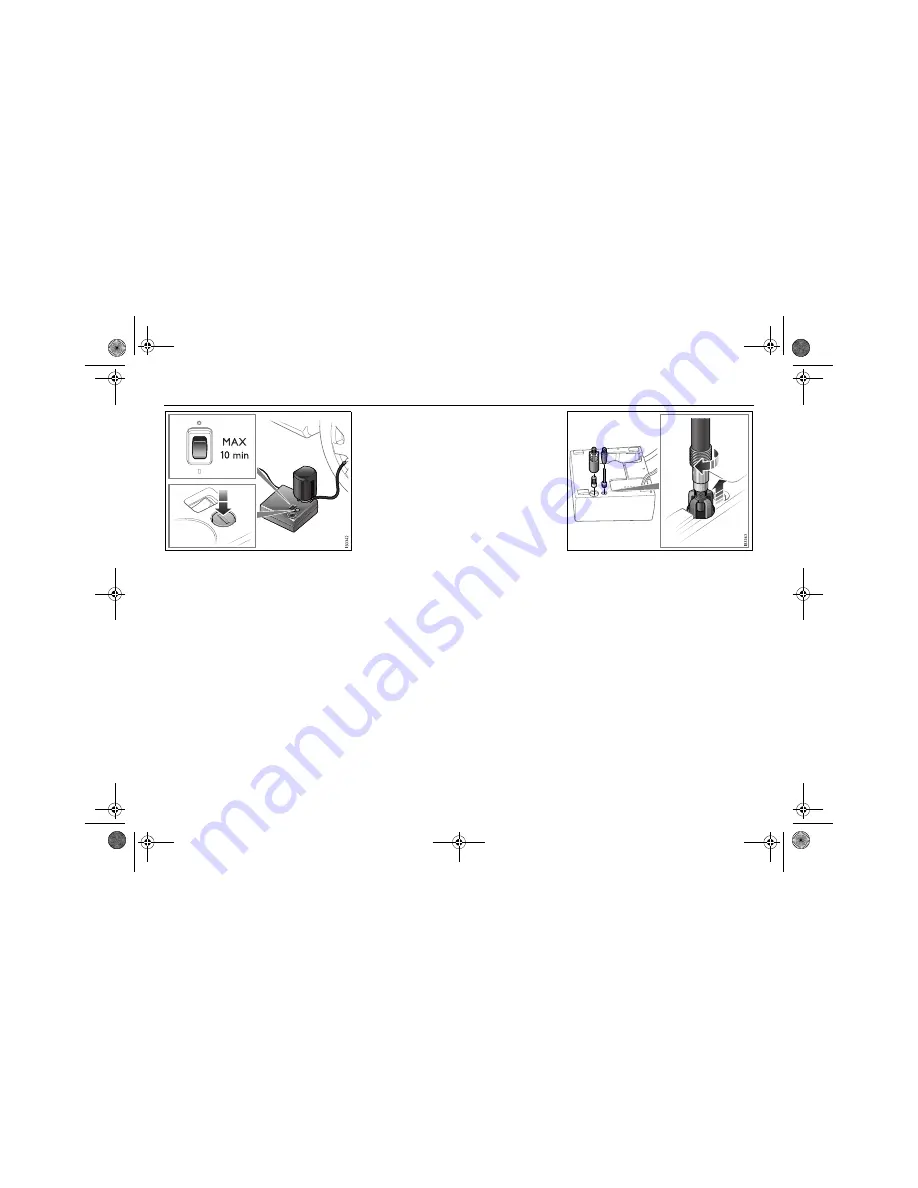
265
Car care
If the correct pressure is not reached
within 10 minutes, the damage to the tire is
too large to be repaired with the sealant.
Park the car in a suitable place and call for
assistance.
If the tire pressure becomes too high, it can
be reduced by pressing the button by the
pressure gauge on the compressor.
Do not run the compressor for more
than 10 minutes.
14 Assemble the repair kit and return it to its
designated place in the luggage
compartment.
15 Wipe away any sealant that may have
leaked out with a rag.
16 Put back the warning triangle.
17 Affix the label in the kit showing the
maximum permitted speed so that it is
clearly visible to the driver.
18 Drive off immediately so that the sealant
is distributed evenly around the tire.
19 Stop after approximately 6 miles
(10 km) or 10 minutes (whichever
occurs first) and check the tire pressure.
To do so, connect the air hose on the
compressor directly to the valve on the
tire.
If the pressure is greater than 19 psi
(1.3 bar), adjust it to the recommended
value, see page 291. It may be neces-
sary to check the pressure a number of
times on the way to a workshop.
If the pressure falls below 19 psi
(1.3 bar), do not drive the car any further
but call for assistance.
The most likely reason for a drop in pres-
sure is probably that the damage to the
tire is too extensive to be repaired with
the repair kit.
20 Return the repair kit to its designated
place.
There are four adapters on the underside of
the compressor which allow the compressor
to be used to inflate other items such as
bicycle tires, air mattresses and footballs.
93_US_7carcare_MY09.fm Page 265 Tuesday, April 15, 2008 11:26 AM
















































